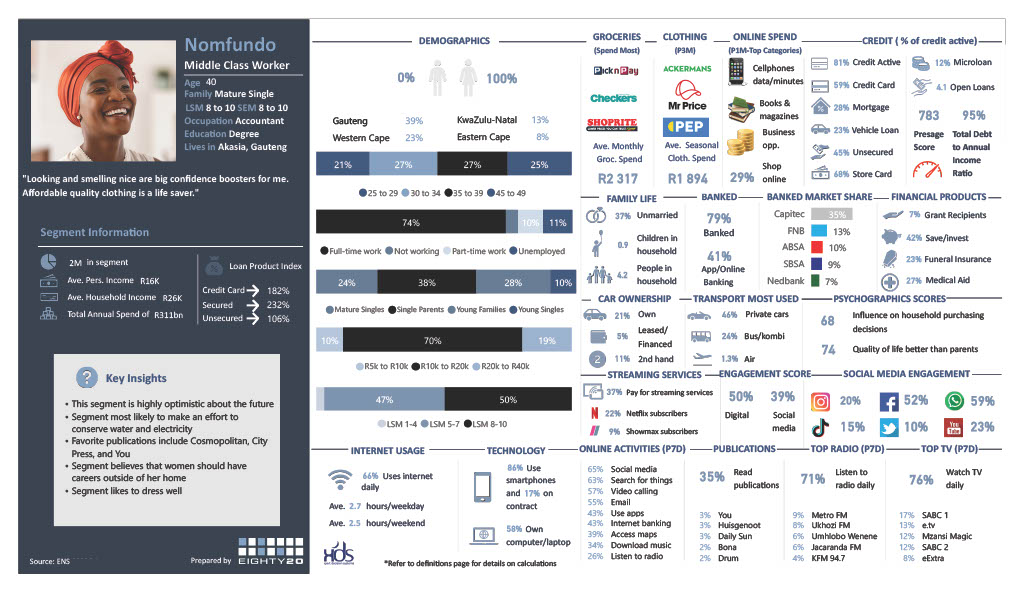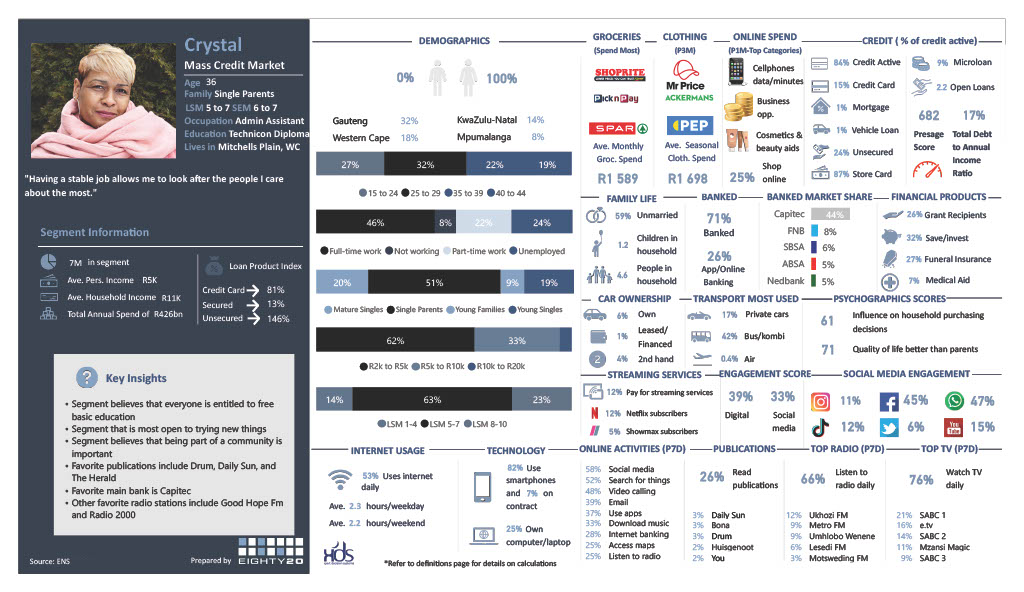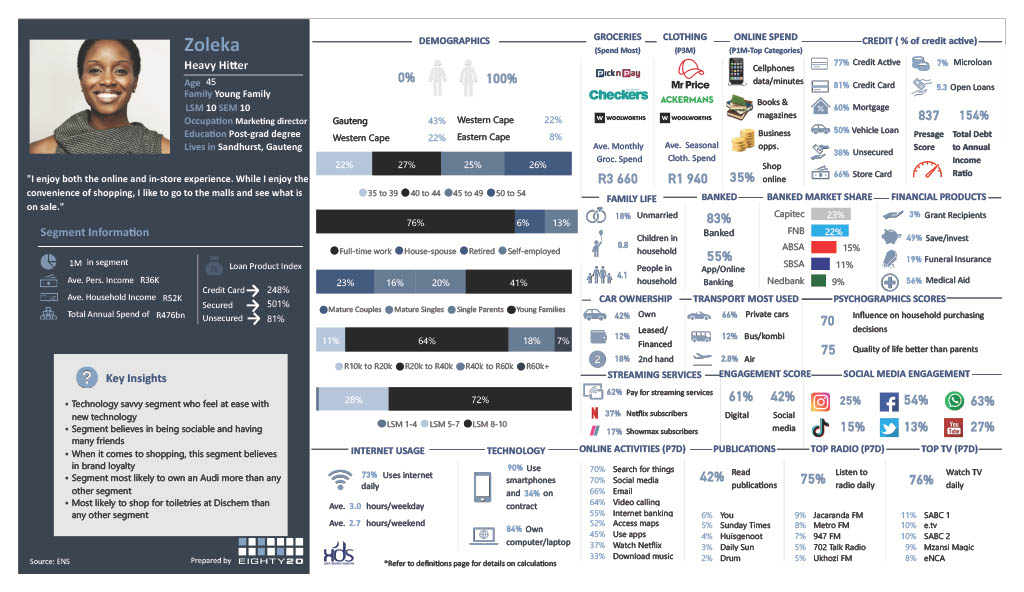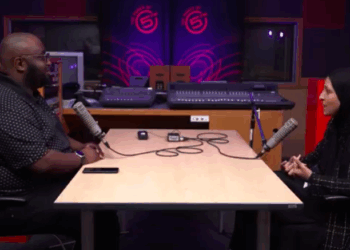The 2025 Income & Expenditure survey reveals some noteworthy South African realities. One is that on average, women still earn significantly less than men, with female-headed households earning R93 540 compared to R176 812 for their male counterparts.
This topline figure, however, obscures a more nuanced story that forward-thinking brands are utilising. When controlling for education and employment status (for instance full-time employed women with postgraduate degrees) female earnings rise as high as 90% of its male counterparts.
According to recent MAPS and StatsSA data, there are nearly 1.5 million more women than men in the country (they tend to live five years longer), women represent 59% of undergraduate degree holders, 52% of smartphone owners and contribute 45% of national income.
Declining fertility rates (from 2.78 children per woman in 2008 to 2.21 today) have accelerated women’s participation in higher education and workforce entry, fundamentally reshaping consumer spending patterns across most categories.




The evolution of women-centric products and services
It is not surprising that many brands have targeted women as a demographic category, using everything from superficial gender markers (think pink razors, ‘Bic for her’ pens and a lot of alcohol advertising) to product or service adaptations that address real functional differences or preferences.
A recent example is Saysh, a company founded by Allyson Felix – the most decorated female track and field Olympian in history – that produces shoes designed for women’s bodies and how they change through age or pregnancy.
After parting ways with Nike due to their lack of support during her pregnancy, she created a brand that champions women.
Many companies have recognised the unique needs of this segment and have leveraged that into solutions and products that resonate. There are women-only gyms like Curves, or Feminique, which not only cater to women, but considering 65% of single-parent families are headed by women, also provide child-care facilities.
Profitable niche markets
Bumble did not just create another dating app – they recognised that women wanted control over initial contact, adding a safer option to internet dating.
Uber recently launched a pilot programme in the U.S. that caters for both female drivers and passengers. The service allows women passengers to request women drivers but also facilitates women drivers accepting only female passengers.
1st for Women, founded in 2004, is South Africa’s first and only exclusively female insurance company. The company was created by the insurance group Telesure (now TIH) from the realisation that there was a growing market of women taking out their own policies, but the market was not catering to women’s unique insurance requirements.
It is an interesting local example of how a company can successfully use research to find profitable niche markets.
1st for Women began as a motor insurer focused exclusively on women, then moved to a range of non-life and life insurance policies, as well as value-added products designed for, and by, women.
“1st for Women’s approach and its success demonstrate the importance of conducting research to understand women’s needs before launching products for them.
“The company has learned that if a product resonates with customers and it is marketed well, success will follow,” says Seugnette van Wyngaard, head of 1st for Women.
A safer segment
By focusing on women, 1st for Women leveraged favourable risk factors to position their product with a naturally safer segment.
Women tend to have fewer and less costly claims than their male counterparts because on average:
- Women tend to be more risk averse and careful drivers
- Usually stick to the speed limit and are less prone to road rage
- The cost of repairs to vehicles crashed by women is lower than the cost of damage caused by men
“Clients are seeing the value of better understanding their markets, we are tasked with not only identifying growth opportunities but also tailoring propositions niche and not-so-niche segments,” says Andrew Fulton, director at Eighty20.
“To remain relevant, servicing the real needs of customers is becoming increasingly important in a market where the most growth is coming from market share gains.”














